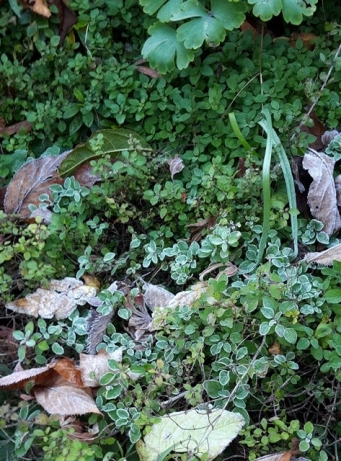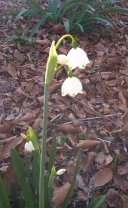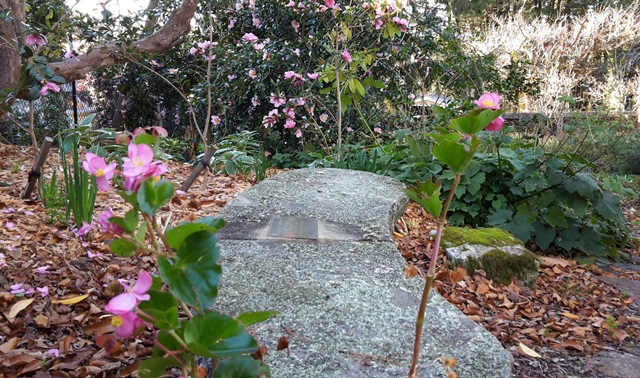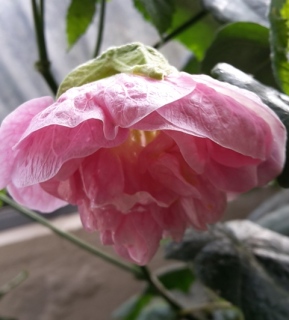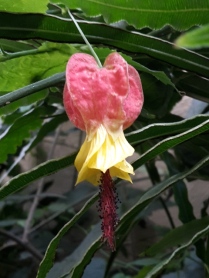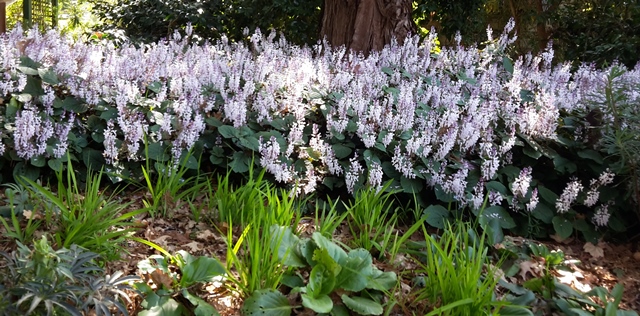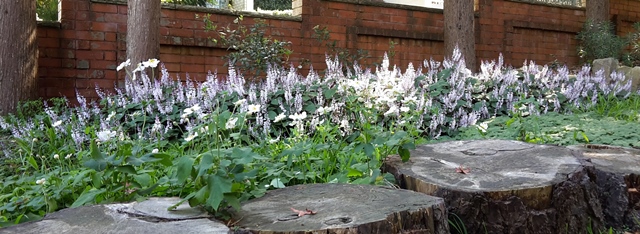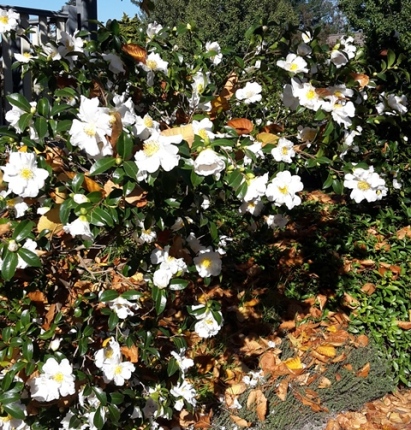I have been trimming and shaping our evergreen shrubs as they come to the fore and attending to hedges now the autumn leaves are fallen and the trees bare of green. The pohutakawa took me ages to identify but the nearby New Zealand flax should maybe have given me a clue to the plant preferences of a previous gardener. We have Arthropodium cirratum (New Zealand rock lily) on site too and I have added Korokia cotoneaster to the New Zealand component. In shaping these already established plants I responded to the shape already presented by the plant, formalising it a little. In the pohutakawa photo there is also a recently levelled buxus hedge, trimmed calamondins and in the foreground a budding Pieris japonica. The holly is very difficult to shape because as well as being prickly it is perched on the edge of a retaining wall and among other thick growth.
Winter scent is now being contributed by the Luculia mentioned in the previous post, by our car park daphne plants and in the garden by Wintersweet Chimonanthus praecox and Winter honeysuckle Lonicera fragrantissima sometimes known as Woodbine, although this name more commonly refers to Lonicera periclymenum, the vine.
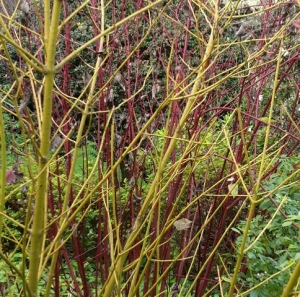
Cornus stolonifera ‘Flaviramea’ in front of Cornus alba ‘Sibirica’
The yellow and red stemmed dogwoods have lost their leaves and are now contributing stem colours to the garden. I planted these dogwoods to add winter colour and they have proved very successful. I do think there is some variation in the intensity of the red, depending on the provenance of the actual plant and the nursery it originated from. I bought the yellow stemmed as C.stolonifera ‘Flaviramea’ but it’s more common synonym is C. sericea ,Flaviramea’




